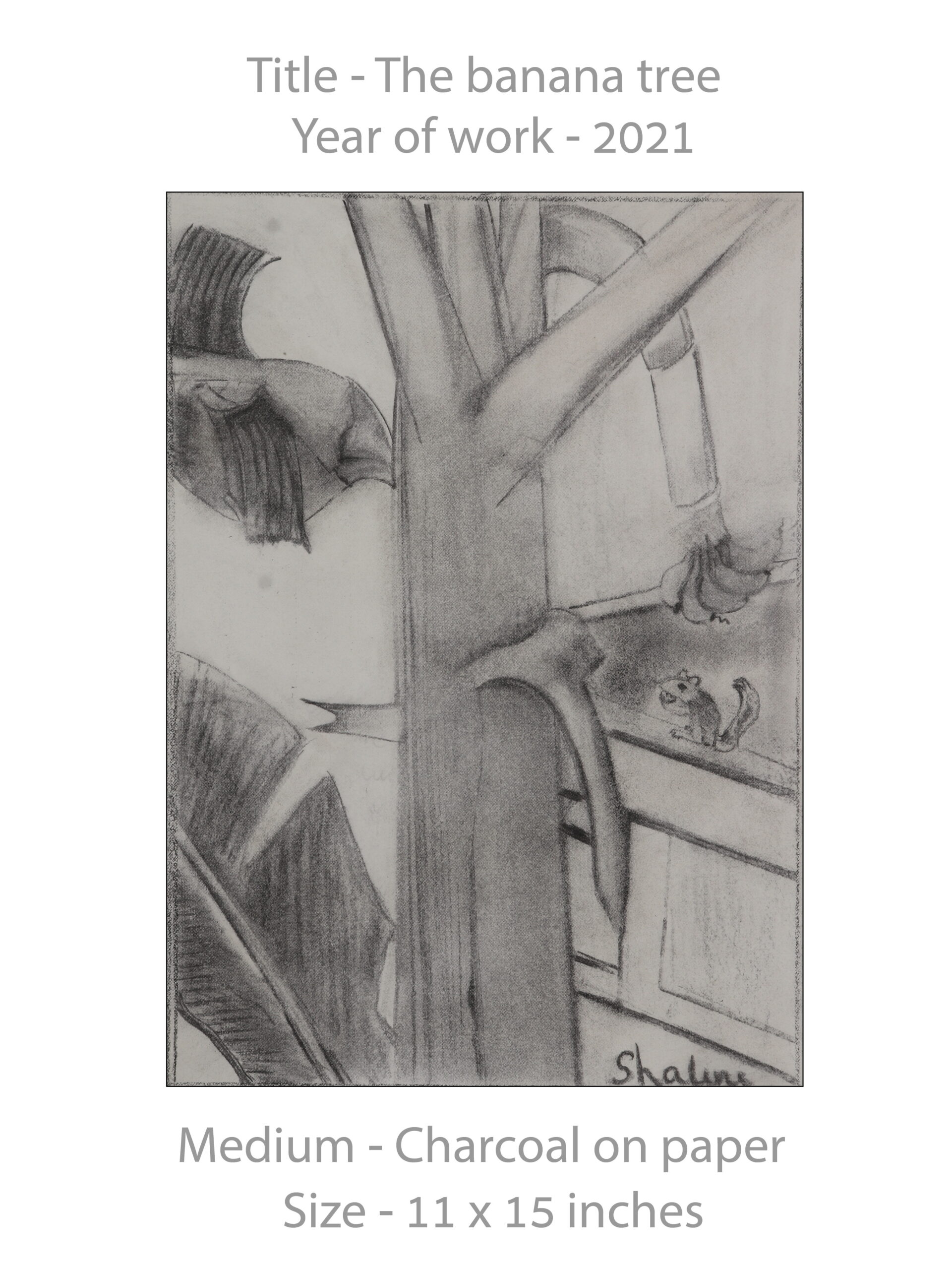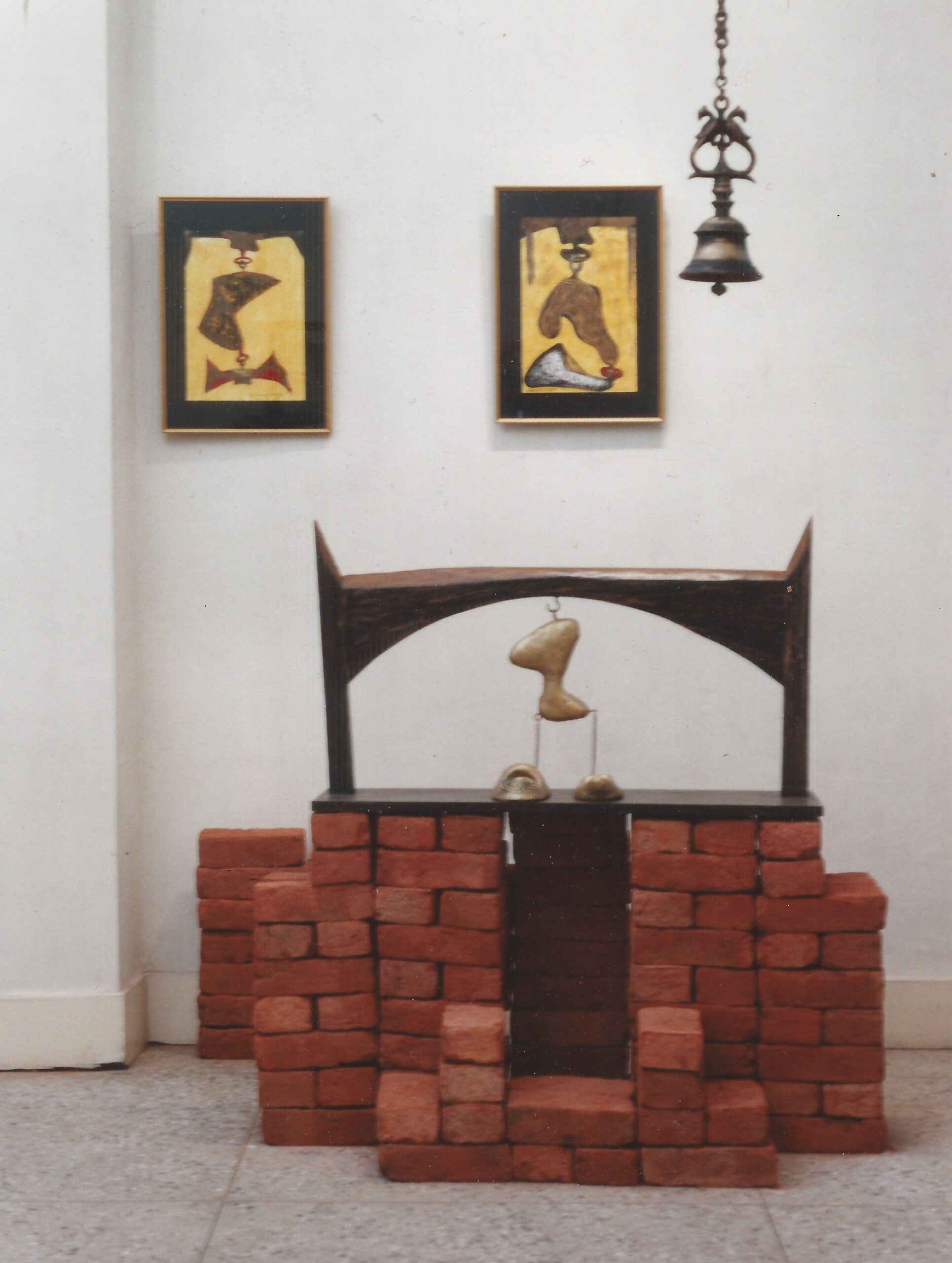Independent Study on Folk Theatre by Ishita Ahlawat and Mansi Panwar
CLASSIFICATION
Madalya Vesh can be classified based on the themes into
- Social
- Nature- Related
- Protest
- Occupational
The Social Skits deal with the problems of their own community. These are full of humour and laughter even when sarcastic. Popular social skits are Be Bairi no vesh ( Tale of two wives) and Pahana (Guest) Environment being an integral part of their lives, it is seen in their vesh too. For instance, in Wagh Bakdi , The goat of Sohangi is eaten up by a tiger in the forest. Such incidents are common in their lives. This experience was converted into comedy of errors. It is a popular skit.
Rebellion against authorities is strongly expressed. When the tribals lost control over their forests, the restrictions imposed by the authorities were resented by the Dangis and they voiced their protest through Theater.
Some themes are even related to special occupations that are connected with environmental needs such as hunting, castration of oxen, grazing cattle, goats in the jungle The occupational hazards the face are also shown in a way that generates laughter in the audience.
There are few skits that are both related to occupation and nature. For instance, skits of Harpin and Murain revolve around female characters that have to go into the jungle due to their occupation or duty.
Undoubtedly, Madalya Theater provides interesting entertainment and voices the feelings of Dangis very well. But it’s not that popular now. Modern sources of entertainment such as television, radio and films make Theater no longer thrilling or enjoyable. A small number of scripts repeated over time, also lose power to entertain the new generation of Dangis. Especially when no new skits are coming forth. It is an all-night affair but now-a-days people prefer spending their night time with television.
Even the visual attraction is lacking in this Theater. as their costumes remained simple. It does not have mythological or epic stories that find acceptance even in the modern times. The artists so not have a good income from their performances, this also discourages the new generation from joining the team of their village and continuing the art. The advent of other forms like Tamasha from Maharashtra, diminished the popularity of Maharashtra. The music of Tamasha is based on Hindi films which attracts large crowd.
Utpala Desai has written in Horizon’03 “ In spite of such a strong capacity and structure, this form of Theater has not received the attention it deserves. If taken seriously it can be a competition to even modern Indian Theater. I think because it makes no little use of props. It lets imagination run riot and achieves easily aim of all performing arts where the audience feels one with the performers. It is high time that we study this form and develop it so that it receives acceptance and gives us an opportunity explore another form of folk entertainment. Instead of treating it as a museum piece, it should be brought to life with new techniques and themes of current interest and shouldn’t be left to die, as we have done with so many other inherited art forms.”
TRADITIONAL THEATER OF INDIA – CONTINUITY AND CHANGE
It is believed that Theater and drama are gift of west to India. We have some popular entertainments like Nautanki or the Jatra but these had little to do with drama which was introduced by British. Indian Drama is more of dramatic poetry even that had become extinct and was rediscovered for India by the western scholars. Nothing could be further more truth.
The distinctiveness of Indian Theater tradition in the dramatic cultures of the world- its antiquity as well as its imaginative and aesthetic quality is more or less indisputable today. The roots of Theater in our country are very old and deep. It had undergone wide ranging, fundamental changes during the last two to three thousand years.
It can be safely asserted that some kind of theatrical activity with elements of music, dance, acting had been in vogue in the country for at least a thousand years before the Christian era. With the appearance of more favourable socio- cultural conditions, it gradually acquired more regular and complex forms, such as those of Sanskrit drama and Theater from sixth to fourth century B.C. Thus began that fascinating period of the unique flowering and achievements of the Indian dramatic tradition.
In this new phase plays of different kinds, styles and artistic excellence were written in Sanskrit, the language of literary expressions of that time. Many innovative and often highly sophisticated styles for the presentation of those plays were also developed. This burst of energy was not confined to creative exploration dramatic writing and staging.
But this Theater, established on such a strong base of theory and practice had disintegrated gradually by 10th century A.D. There are many reasons for this decline: social and political instability created by foreign invasion and internal conflicts, loss of creative energy in the Sanskrit language gradually confined to a small elite, fall in the standard of dramatic writing due to lack of talent, loss of appeal for common spectators too. And this Theater gave way to another Theater tradition that flowered in different regions of India.
We thus came to the next phase of Indian Theater which took place not in Sanskrit but in different regional languages carrying with the distinct social, cultural, literary milieu and flavour of each region. This phase of Indian Theater is spread over a period of about one thousand years, and many of its strands and forms have continued up to the present day. The activity in this entire phase is often called ‘folk Theater’ today, because unlike the town based classical Sanskrit Theater it has flourished in the countryside.
A FEMINIST PERSPECTIVE
If one were to look for a gender identity for theatrical forms, then clearly folk Theater would be feminine as against the masculine classical form. As Rubees observes, “a feminist dramaturgical aesthetic spurns these structures based on conflict and resolution. Where everything gets built up to one screaming point and then everything is released. Women often write in waves, repeated climaxes, collages..”
Despite the ongoing efforts of groups of women in India to Indianize the feminist movement, the popular conception of the term Feminism remains both ignorant and imitative. Sociological studies outline a movement that is at best skeletal, too amorphous and rambling to have any meaningful impact in any but a sporadic way. Most importantly, the reach of feminism is restricted to an urban upper class. India‟s urban rural divide intensifies the problem of disparity between women of varied socio economic backgrounds, problematized further by the aspect of caste. Women‟s class „economic grounding, family and geographical locations‟ have a direct bearing on their intellectual leanings. Work is not a common yardstick of liberation for urban and rural sisters. For a woman belonging to the elite class, a job spells economic independence and therefore liberation while for rural women belonging to the lower classes; work is a reminder of their economic bondage. Gender in their context is not a distinguishing factor since both sexes have an economic responsibility to fulfil. The status and position of women within the Indian patriarchal system however, leaves a lot to be desired. If Indian society is to become truly modern and progressive, the concept of equal rights and awareness of social realities must reach all women but particularly rural women who are the most exploited. For the feminist quest, folk Theater displays an almost natural propensity. When compared, the features of the sub genres of folk Theater and feminist Theater (as it exists in the West) divulge a large number of similarities in both form and structure. The parallels between folk Theater and the feminist quest are undeniable. Balwant Gargi in Folk Theater of India listed out certain characteristics of folk Theater. He stated that some precepts of folk Theater remain common, regardless of state and cultural identity. Primarily rural, it is rustic, unselfconscious, spontaneous and boisterously naïve. Folk Theater does not offer a slice of life, but a panoramic view of existence and elicits enthusiastic audience participation.
Ann Saddlemayer, eminent feminist critic, says of Feminist Theater, “that‟s how our art should be all encompassing, sucking in, surrounding, embracing, not linear, not clear cut, not sequential…film, slides, music, puppets actresses, dancers, everywhere on top of you., below you, around you. That would be women‟s Theater•a circus feeling throughout the play, a circus that people could enter. Ideologically then, there is a definite match but structurally too, similarities between folk Theater and feminist Theater are too many to ignore. Both defy the linearity of time and space favored by classical (male) Theater, in an effort to achieve timelessness. Both refrain from the concept of linear time and may build up a montage of varied dramatic episodes. Because both are performed by the marginalized, there might be a paucity of funds, so the same set is often transformed via word or action. Props are also minimal. Furthermore, the actor/character is chameleon•like. One actor sometimes plays several roles. The feminist protagonist plays several roles to heighten the sense of female perspective of various incidents. Feminist Theater by definition is drama that embraces transformation, inspires and asserts the possibility for change. Its emphasis on role playing implies that we (human beings) are what we do and what we become and that no one, neither man nor woman, is restricted from becoming the other.
REFERENCES
Folk Theater of India by Balwant Gargi
Horizon Magazine-Issues of Folk Theater (Guest Editor: Manohar Khushalani) http://www.gujaratindia.com/about-gujarat/bhavai-folks-drama.htm http://www.demotix.com/news/2473065/tribals-rehearse-ahead-national- folk-theater-festival#media-2473014









